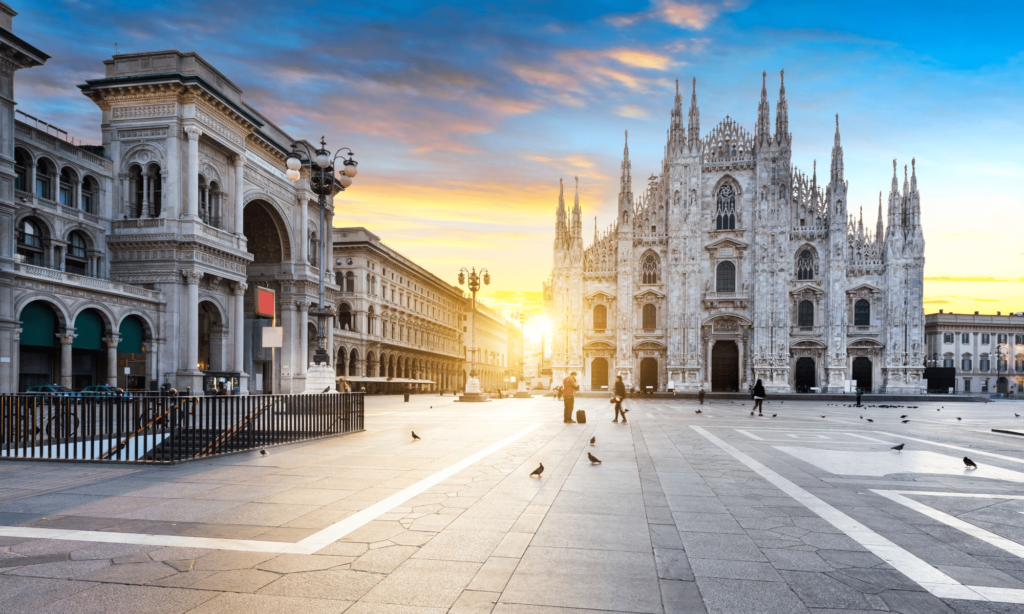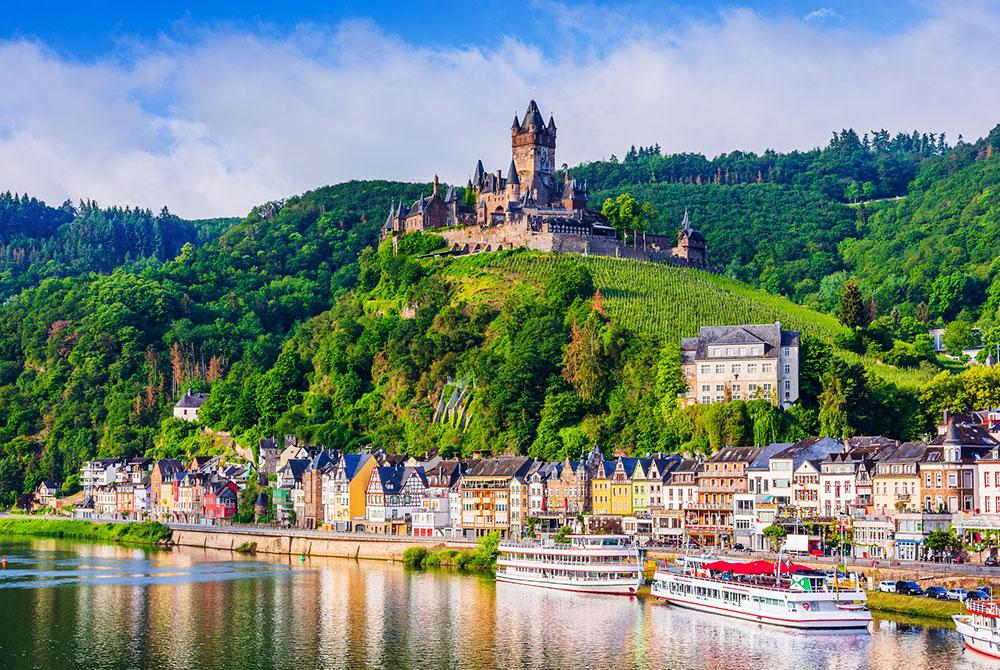This article will introduce you to the top tourist attraction in Rome, And of course, all the must-see sights every visitor should see when they spend their vacation in this eternal city.
The first reason to visit the city is that it is full of appealing museums, squares, landmarks, and other highlights. Furthermore, it offers more than just sites like the Colosseum. Its surroundings are magical as well. Therefore, you should check it out, too.
These are monogamous sightseeing attractions and the Mosin Rome t pore popular in Rome our visit. Please write a comment below about which tourist attraction is your favorite.
Our list of the Top attractions in Rome
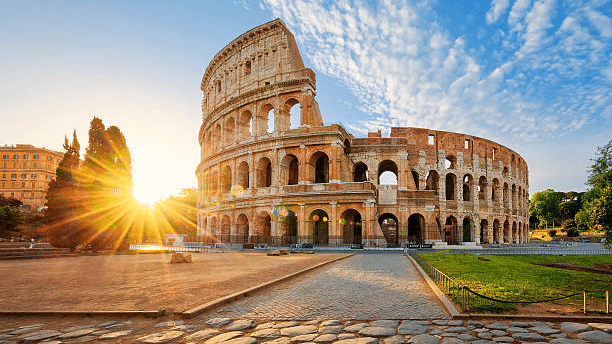
©Istock.com/vwalakte
Colosseum
The number one attraction in Rome is the Colosseum, the giant amphitheater that used to house more than 65,000 spectators in Roman times. Gladiators battled each other and wild animals in the Colosseum’s arena. Because of the vast number of visitors, we recommend booking tickets to the Colosseum in advance. It is considered one of the seven modern wonders of the world. More info on the famous landmark ‘Colosseum.’
Tip for LGBT+: The gay street is very close to the Colosseum, so it’s best to book your room nearby. You can read more about it in our separate guide to gay Rome.

Fontana di Trevi, ©Istock.com/ventdusud
Trevi Fountain
This baroque fountain, located on the Piazza di Trevi, was built in the 18th century. It is, without a doubt, the most famous fountain in Rome and perhaps even the world. The landmark and monument display the god of the sea, Neptune, on his chariot. No visitor to Rome sightseeing is complete without tossing a coin in the Trevi Fountain, which means you will return to Rome.
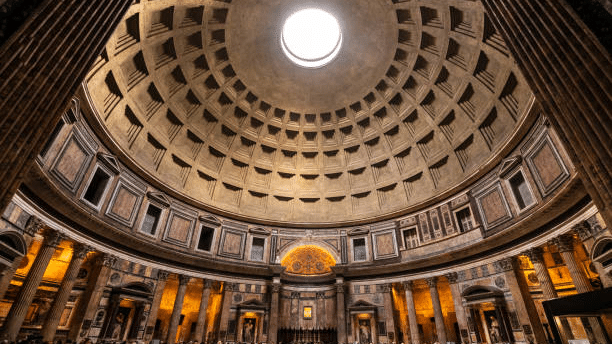
Pantheon, ©Istock.com/Kemter
Pantheon
It is for sure one of the best-preserved buildings from Roman times. However, it is still unclear what function the building had in those days, but the Pantheon was eventually turned into a church. More importantly, it contains several funerary monuments (painter Raphael and a few Italian kings) and a vast open dome (oculus). During your city break in Rome, you can visit the Pantheon for free.
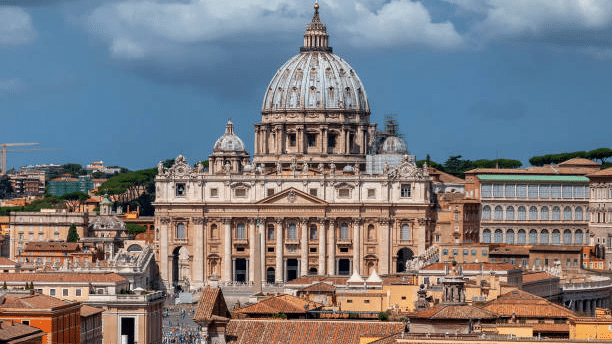
St. Peter’s basilica in Vatican, ©Istock.com/FotoGablitz
St. Peter’s Basilica
The enormous basilica, located in the independent state of Vatican City and next to St Peter’s Square, was built on the assumed grave of St. Peter. As you know, it is the Catholic Church’s spiritual center and the pope’s residence. Furthermore, St. Peter’s Basilica contains masterpieces such as Bernini’s Baldachin and Michelangelo’s ‘La Pieta.’ You can also visit the crypts with 148 papal tombs. Plan your visit if you do not want to stand in a long line.
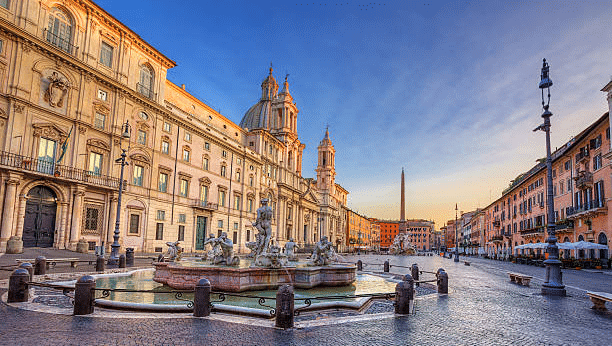
Piazza Navona, ©Istock.com/phant
Piazza Navona
Without a doubt, Piazza Navona is one of the grandest squares in Rome. Its extended shape is due to its original purpose as a Roman stadium. Attractive sights on the square include several fountains, such as Bernini’s ‘La Fontana dei Quattro Fiumi.’ In addition, Piazza Navona is a lively square with many street performers, cafés, and terraces, definitely on a must-see list.
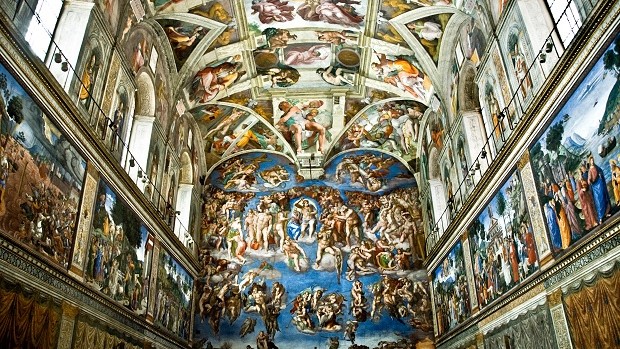
©cntraveler.com
Vatican Museums & Sistine Chapel
Over the centuries, the popes amassed an enormous art collection varying from Roman objects and religious relics to countless paintings. You can visit 54 richly decorated rooms in the Vatican Museums and view these art treasures. The highlight for many visitors is likely to be the famous Sistine Chapel. The chapel of magnificent Michelangelo’s frescos is chiefly known as the conclave site when a new pope is elected. Because it gets so many visitors, this attraction has the most extended lines. Reserving skip-the-line tickets is necessary if you do not wish to wait in the hot sun for over two hours.
Note: On the first Sunday of every month, access to the museums in Rome is free. The Domenica al Museo initiative was implemented on July 1, 2014, allowing people to visit museums, monuments, galleries, archaeological digs, parks, and monumental gardens without paying a ticket.
Note: If you’d like to learn more, check out our article “How to skip the line at the Sistine Chapel.”
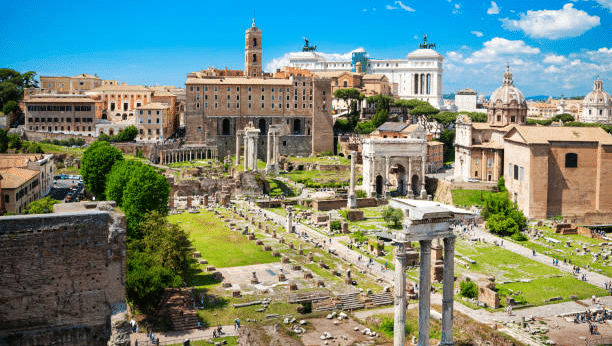
Ruins of Forum Romanum, ©Istock.com/Gosiek-B
Forum Romanum & Palatine
The Forum Romanum was the center of the ancient Roman Empire. During your visit to the Forum Romanum, you will walk past excavations and the archaeological park full of old temples, arches, market halls, and other vital buildings built by different emperors. Next to the forum lies Palatine Hill, where you will find excavations of imperial residences. So, if you wonder where Julius Ceasar was assassinated, this is the place to go.
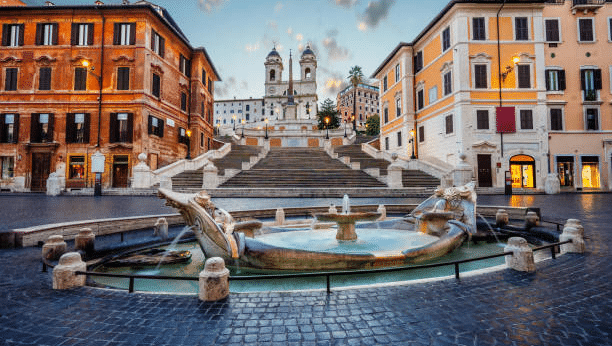
Spanish steps, ©Istock.com/FilippoBacci
Spanish Steps (Piazza di Spagna)
The Piazza di Spagna is named after the Spanish Embassy there, and the name extends to the steps built in the 18th century.
The film Roman Holiday (1953), starring Audrey Hepburn and Gregory Peck, made the Spanish Steps famous worldwide.
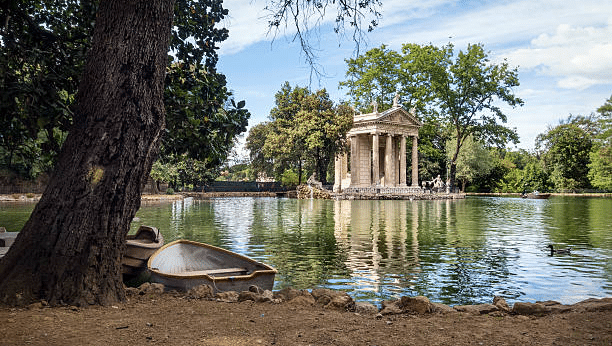
Villa Borghese, ©Istock.com/ROMAOSLO
Galleria & Villa Borghese
‘Villa Borghese’ refers to Rome’s largest and most beautiful public park. The estate belonged to the very wealthy Cardinal Scipione Borghese. Since 1903, it has owned Rome’s municipality. The ‘Galleria Borghese,’ a museum displaying Borghese’s sizeable private art collection, can also be found in the park. The gallery contains sculptures and paintings by artists such as Caravaggio, Rubens, Bernini, and Leonardo da Vinci.
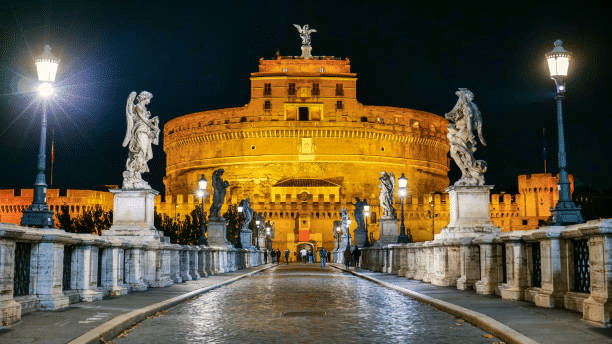
Castel Sant’ Angelo©Istock.com/Photo Beto
Castel Sant’Angelo
The Emperor Hadrian’s mausoleum was the 2nd-century Castel Sant’Angelo or Castle of the Holy Angel. After Archangel Michael appeared here in 590 and ended a plague, Pope Pius II had a giant bronze statue of the angels on top of the castle. The Castle of the Holy Angel was part of Rome’s defenses and offered a place where popes could shelter, as the Vatican was connected to it by a tunnel.
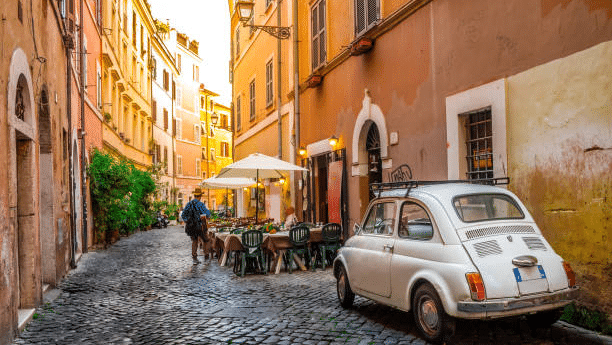
Trasvetere, ©Istock.com/Nicola Forenza
Charming Trastevere
On the river’s opposite bank, the Tiber, lies the old working-class neighborhood of Rome. Trastevere is a typical Italian neighborhood where you can get lost in a maze of narrow streets, see old medieval houses, and go for a lively night out in the area’s many restaurants and bars.
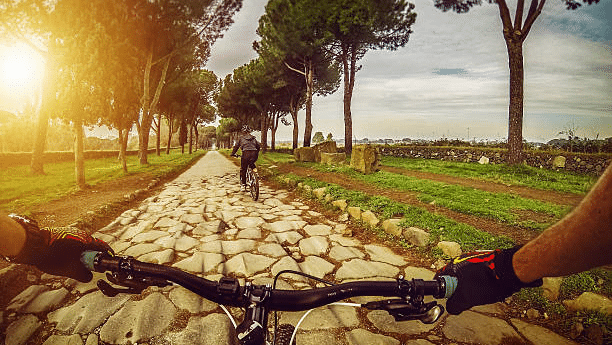
Via Appia Antica, ©Istock.com/piola666
Via Appia Antica
The best way to visit the Via Appia and its tourist attractions is by bicycle. It is one of the oldest roads in Rome, dating back to Roman times. Its primary purpose was trade and efficient transportation of military troops. More importantly, the road was just outside the city walls, meaning many great catacombs and funerary monuments stood there.

Archbasilica di San Giovanni in Laterano, ©Istock.com/sedmak
Archbasilica di San Giovanni in Laterano
Originally founded in 324, the church is the oldest and highest-ranking of the four major papal basilicas, holding the unique title of “archbasilica.” Furthermore, it is Rome’s oldest public church and basilica in the Western world. Even more impressive, it also houses the cathedra of the Roman bishop and has the title of the ecumenical mother church of the Roman Catholic faithful. The building deteriorated during the Middle Ages and was severely damaged by two fires in the 14th century. However, it was later rebuilt. The new structure’s interior is from the late 17th century.
We bet you were surprised. You probably thought St. Peter’s Basilica was the most important one, right?
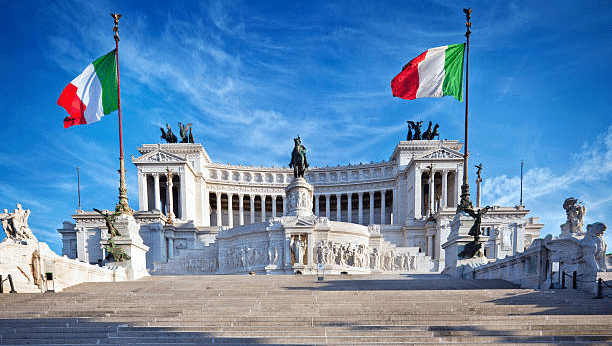
Monument of Vittorio Emanuele II, ©Istock.com/Nikada
Monument of Vittorio Emanuele II
One of the most remarkable Rome landmarks, the monument to the first Italian king, Vittorio Emanuelle II, is located next to the Piazza Venezia square. The building is also called the ‘Altara Della Patria’—the altar of the fatherland—and celebrates the unification of Italy. Furthermore, Romans also nickname it ‘typewriter’ or ‘wedding cake.’
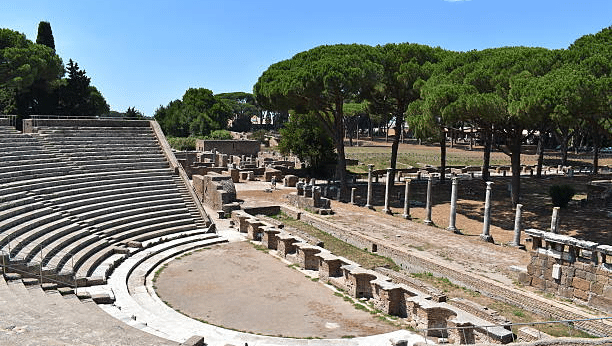
Ostia Antica, ©Istock.com/SethSampaio
Roman sightseeing in Ostia Antica
Would you like to wander the hundreds of hectares of Roman excavations in Rome’s ancient harbor? Especially if you want a break from the noisy Rome, we advise you to visit this archaeological site of Ostia Antica, the old Roman harbor town, for a day trip. It is not far, only 30 kilometers west of Rome, and has a good connection by train.
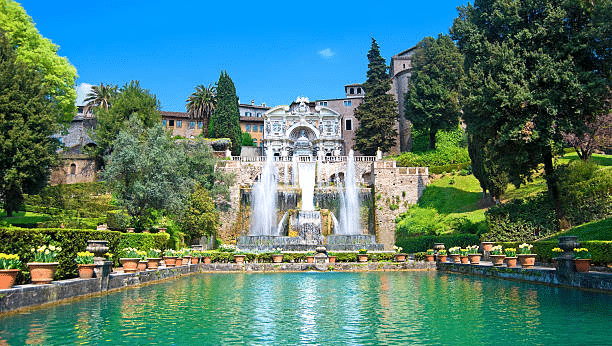
Villa Este in Tivoli, ©Istock.com/AleksandarGeorgiev
Day trip Tivoli: Villa d’Este & Villa Adriana
The town of Tivoli is 29 kilometers east of Rome. In its green surroundings, there are two World Heritage List villas. The first one is the Renaissance Villa d’Este, with beautiful gardens, and the other is the Roman Villa Adriana, the enormous villa of Emperor Hadrian.
The conclusion of this article is “Top Attractions and Things to Do in Rome.”
We have selected only a few examples. Of course, in a city like Rome, there are a hundred sites to see. So, if you have any further suggestions, please comment below. We’d love to read them.

